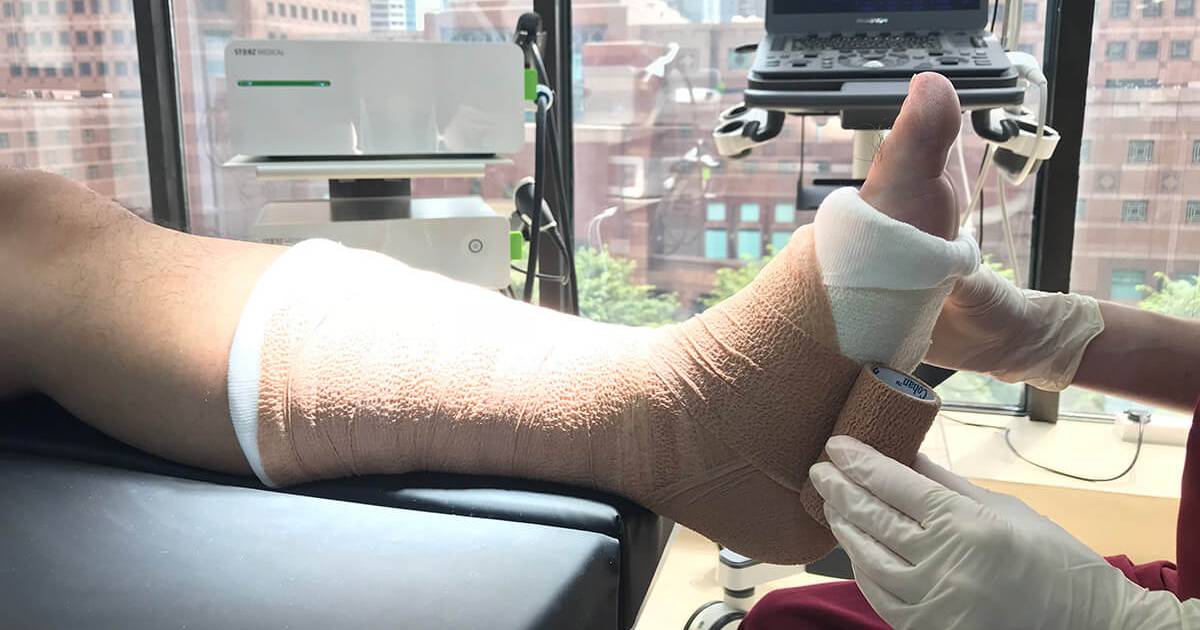A commonly overlooked lower limb condition is one caused by veins. When the veins don’t work well, they don’t return blood in the limbs back to the heart efficiently. This is called venous insufficiency and can lead to venous thrombophlebitis, venous stasis, dermatitis, and ulceration.
Veins have one-way valves that help to move blood back to the heart. If the veins widen or distort, then these valves do not meet and cause blood to flow backwards to the ankles and feet. This is often termed pooling; over time it is noted that blood often leaks from the veins into the surrounding skin and results in a darkening of the extremity. Patients often notice their lower legs turning darker in colour, a feeling of heaviness sets in, and veins may be seen visibly coiling.
Patients with this condition experience swelling in their ankles during the day. The swelling can decrease with rest and leg elevation, but it will not resolve on its own. If venous problems in the lower extremity are not resolved, they can lead to leg ulcers and amputation later on.

Symptoms
- Feeling of heaviness in the legs
- Taut, thickened and darkened skin of lower limbs
- Hair loss on shins and feet
- Frequent leg cramps
- Foot and ankle swelling (decreases with rest and elevation)
- Varicose and spider veins (twisted, bulging, dark purple or blue veins)
- Dryness and itching
- Pain
- Skin sores that ooze, crust or look scaly
This condition is common in those who:
- Are over the age of 50
- Frequently fly
- Stand or sit a lot for work
- Are quite sedentary in lifestyle
- Have comorbidities such as overweight, high blood pressure, kidney failure, history of DVT (blood clot in leg), or congestive heart failure (CHF)
- Have varicose veins
- Went through multiple pregnancies
- Underwent surgery or injury in the lower limb
What can my podiatrist do for me?
Podiatrists are specialists who can provide non-surgical care for vein problems. They can quickly diagnose the cause and recommend solutions for quick and effective recovery. Even a large venous ulceration can heal in less than 2 months with the correct care.
- Specialised wound care if wounds are present
- Specialised compression bandaging
- Long term compression therapy
- Lower limb offloading
- In-clinic therapy for enhancing limb circulation and wound healing
- Prompt referral for vascular surgery if required
Why is compression so important?
Compression therapy is a mainstay for venous insufficiency. It reduces tissue swelling by pushing excess fluids back into the blood vessels. Compression also prevents veins from expanding too much, normalising blood flow and prevent it from flowing backwards. This increased blood flow can help to speed up wound healing, reduce leg discomfort, and prevent infection.
Compression will reduce oedema surrounding the wound/ulcer; the surrounding tissue around the wound/ulcer will then be able to receive the oxygen needed to facilitate healing. Using compression therapy combined with appropriate wound care, in many cases venous leg ulcers can heal faster than standard wound care alone.
Specialist knowledge, a hands-on skillset, and optimal handling of complex wounds mean that lower extremity venous conditions can have a good outlook. Our team of podiatrists will ensure a proper application of both therapy and wound dressing to help heal leg ulcers, preventing infection and leg amputation.





